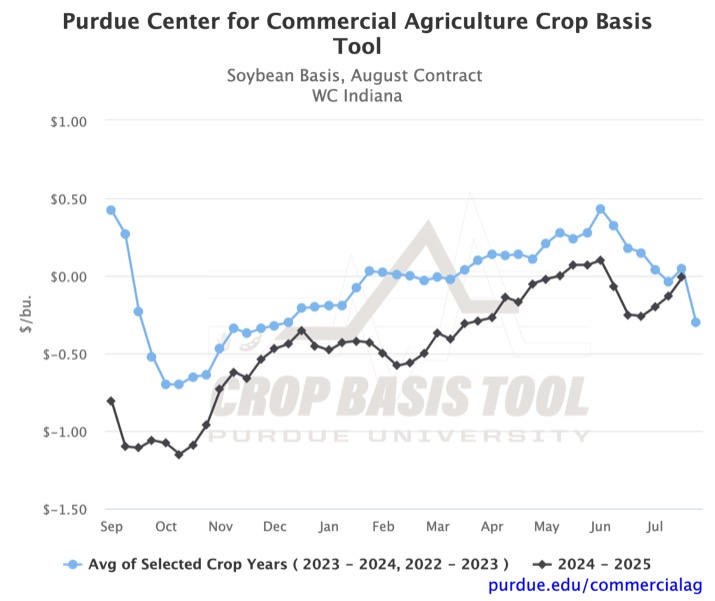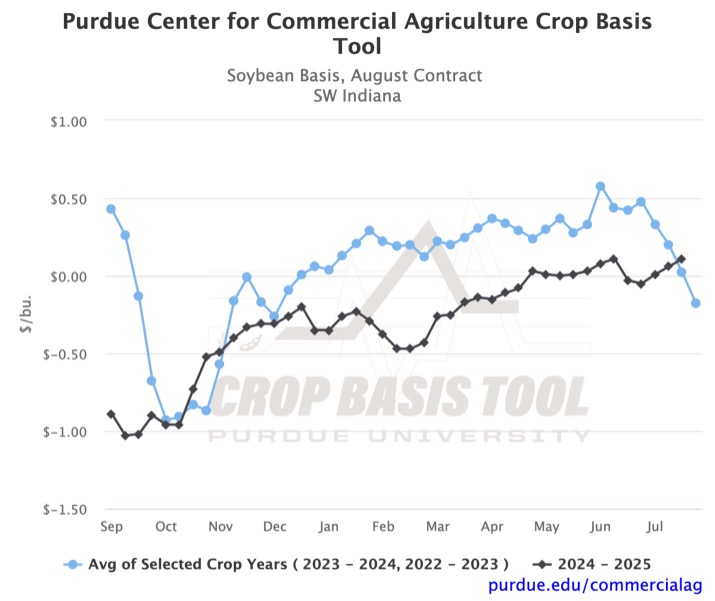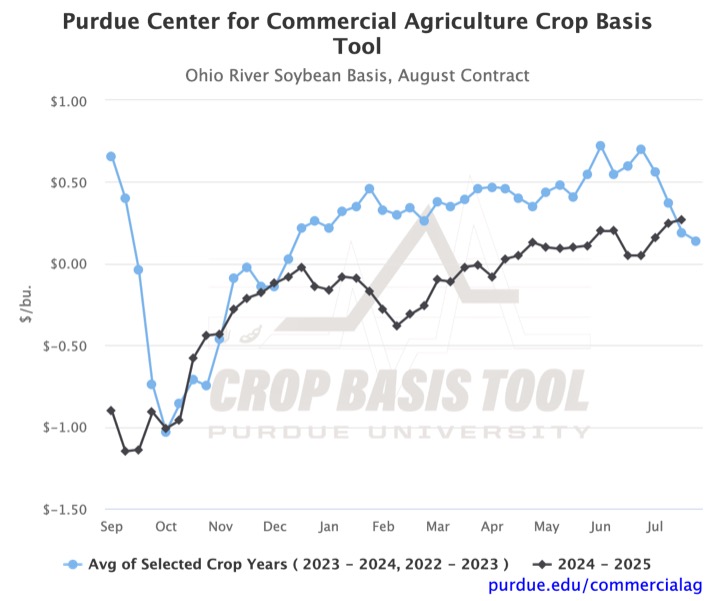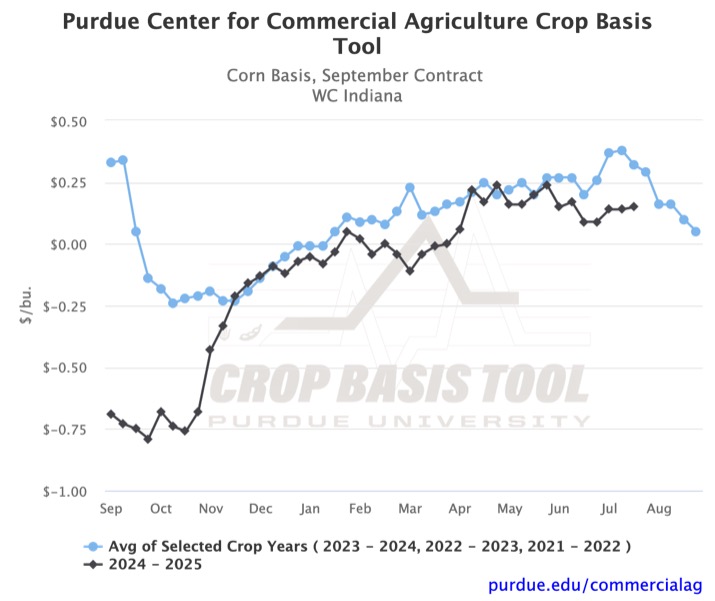July 17, 2025
Soybean Basis Recovers from Sharp Decreases in June
by Josh Strine
At the time of our last basis update in the second week of June, the regional soybean basis was highly volatile. Several regions across the Eastern Corn Belt experienced a decline in the soybean basis of as much as $0.15/bu, while the basis rose by as much as $0.08/bu in other regions. This volatility was driven by sharp decreases in basis at soybean processors in Ohio, Illinois, and Indiana. As June continued, the sharp decrease in soybean basis continued and spread across the entire Eastern Corn Belt. However, as we have progressed through July, much of the basis decrease has been recovered.
Figure 1 shows the soybean basis to August futures for West Central Indiana. During June, the basis fell by $0.27/bu in the region. Over the first three weeks of July, $0.25/bu of the loss was recovered. In other regions, such as SW Indiana, the weakening did not occur until later in the month (Figure 2). In SW Indiana, the basis did not decrease until the third week. Strengthening through July has set a new marketing year high at $0.11/bu in the region.
There is evidence that export demand may be helping drive the disparity in recent soybean basis movement. Soybean basis to August futures on the Ohio River only decreased by $0.03/bu through June before increasing by $0.22/bu over the past three weeks (Figure 3). The Ohio River basis is collected from river terminals in Southern Indiana and Ohio, where regional basis movement was lower.
While there have been large swings in soybean basis, corn basis has been more stable over the past two months. Figure 4 shows the corn basis to September futures for West Central Indiana. Since the first week of June, the basis has held within a $0.08/bu range and currently sits at $0.15/bu. The greatest volatility in Indiana was in the South-Central region, where there was $0.20/bu swing over the past two months.
Looking forward, historical trends suggest that the corn and soybean basis will continue to weaken through the end of the marketing year. Projected sharp decreases in basis through September may be limited by the fact that many current basis levels are below the three-year average. In some cases, the current basis to September futures is already below the projected basis at the end of the year. Visit the Purdue Center for Commercial Agriculture’s Crop Basis Tool to check out your local crop basis and where it may be headed through the end of the year.
TAGS:
TEAM LINKS:
RELATED RESOURCES
UPCOMING EVENTS
December 1 & 8, 2025
Join Purdue Extension for a two-part workshop designed to help you gain a clearer understanding of tax planning essentials. The first session on December 1 will focus on the fundamentals of farm taxes, with particular emphasis on strategies that can be used in a low net income year. The second session on December 8 will focus on key tax strategies and will allow plenty of time for questions. Registration cost is only $20.
Read MoreDecember 15, 2025
This program provides in-depth coverage of agricultural and farm tax issues. In addition to covering timely tax issues, we will cover disaster tax issues, depreciation and expensing farm assets, retirement planning for farms, and tax planning in low-income years. This year’s webinar will be co-taught by a team from Ohio State and Purdue Universities.
Read MoreJanuary 27 or 28, 2026
Farm Shield is more than a conference, it’s a commitment to helping agricultural families build resilience and plan for a secure future. Don’t miss this opportunity to protect your legacy!
Read More



